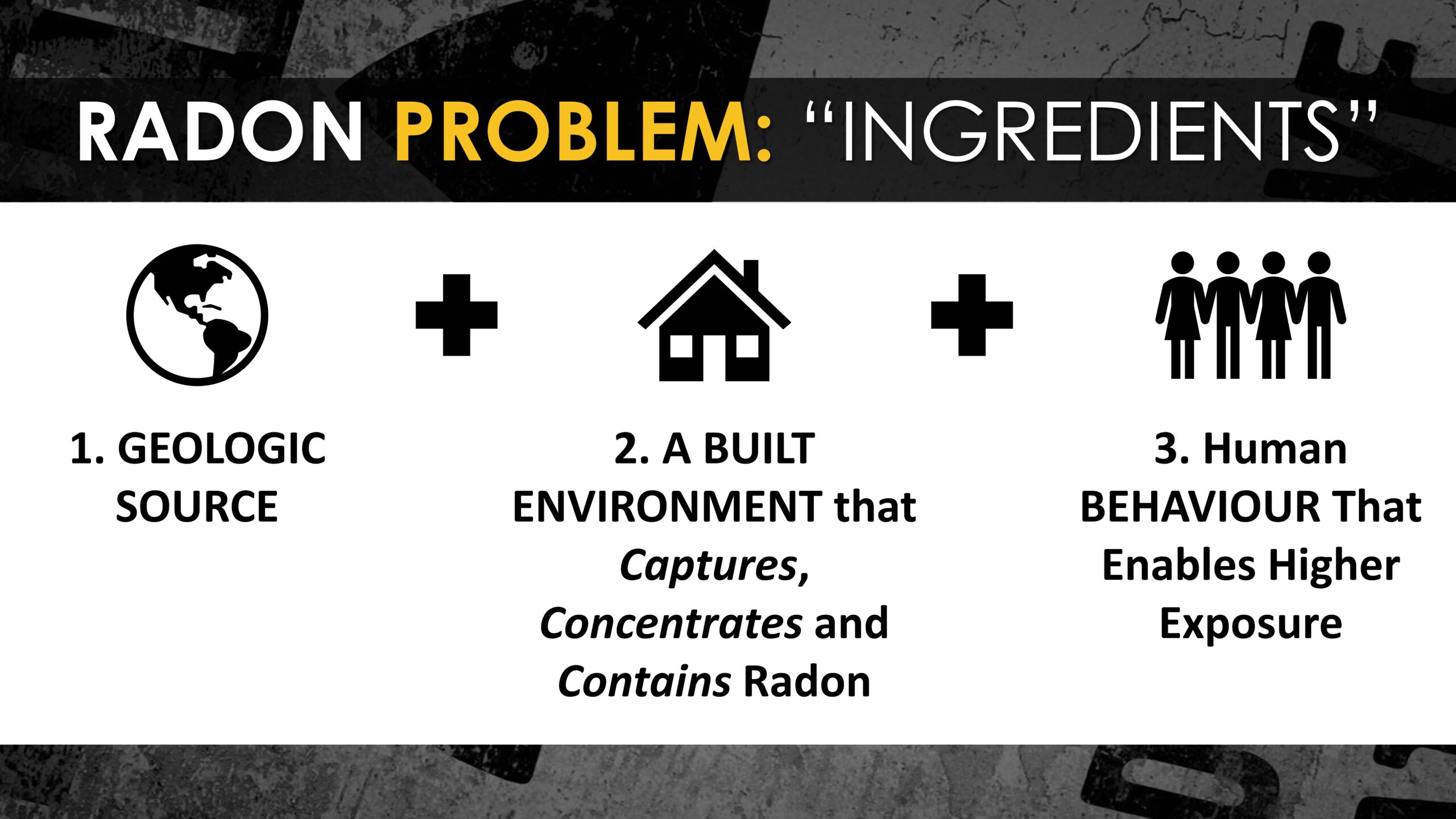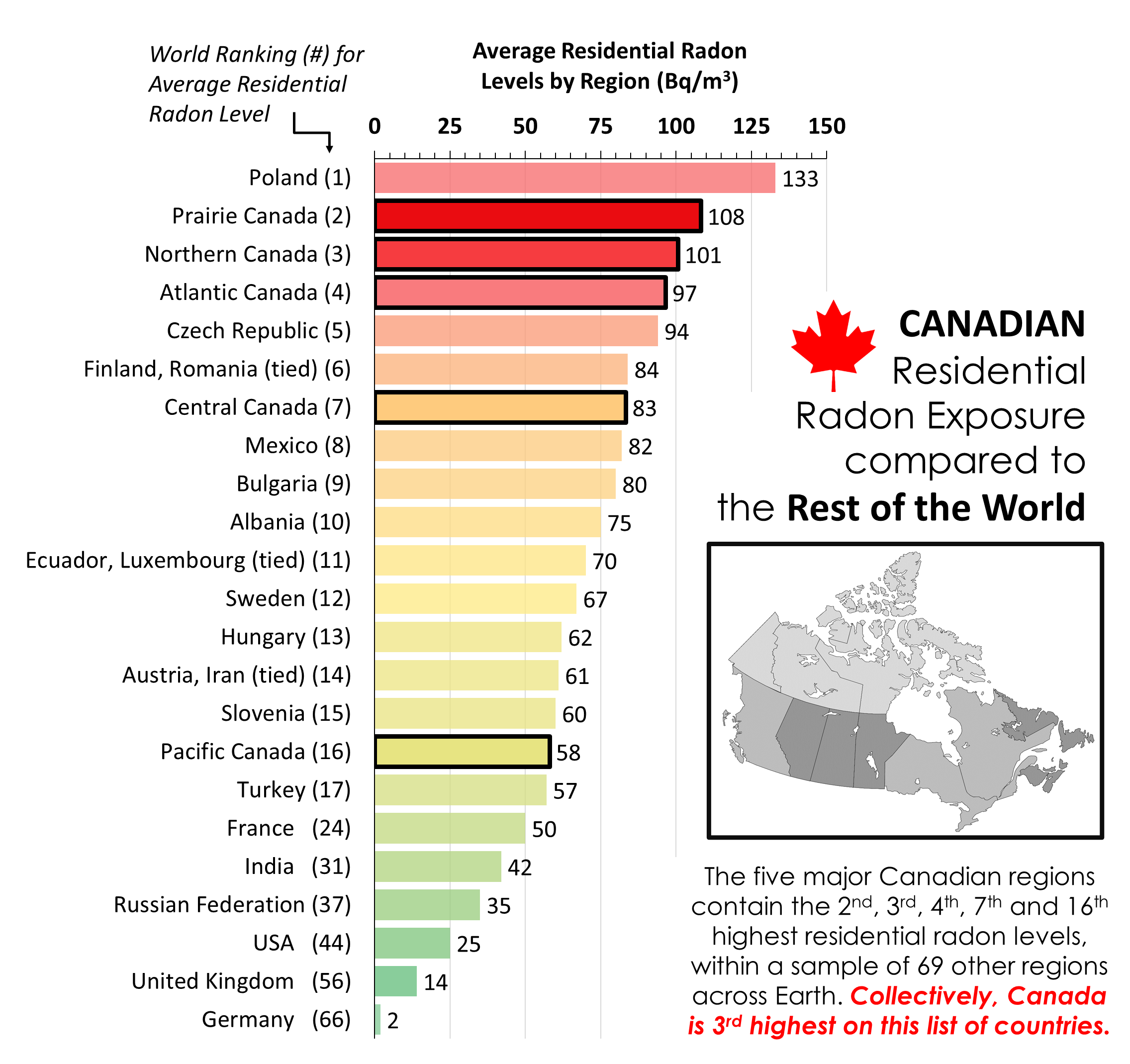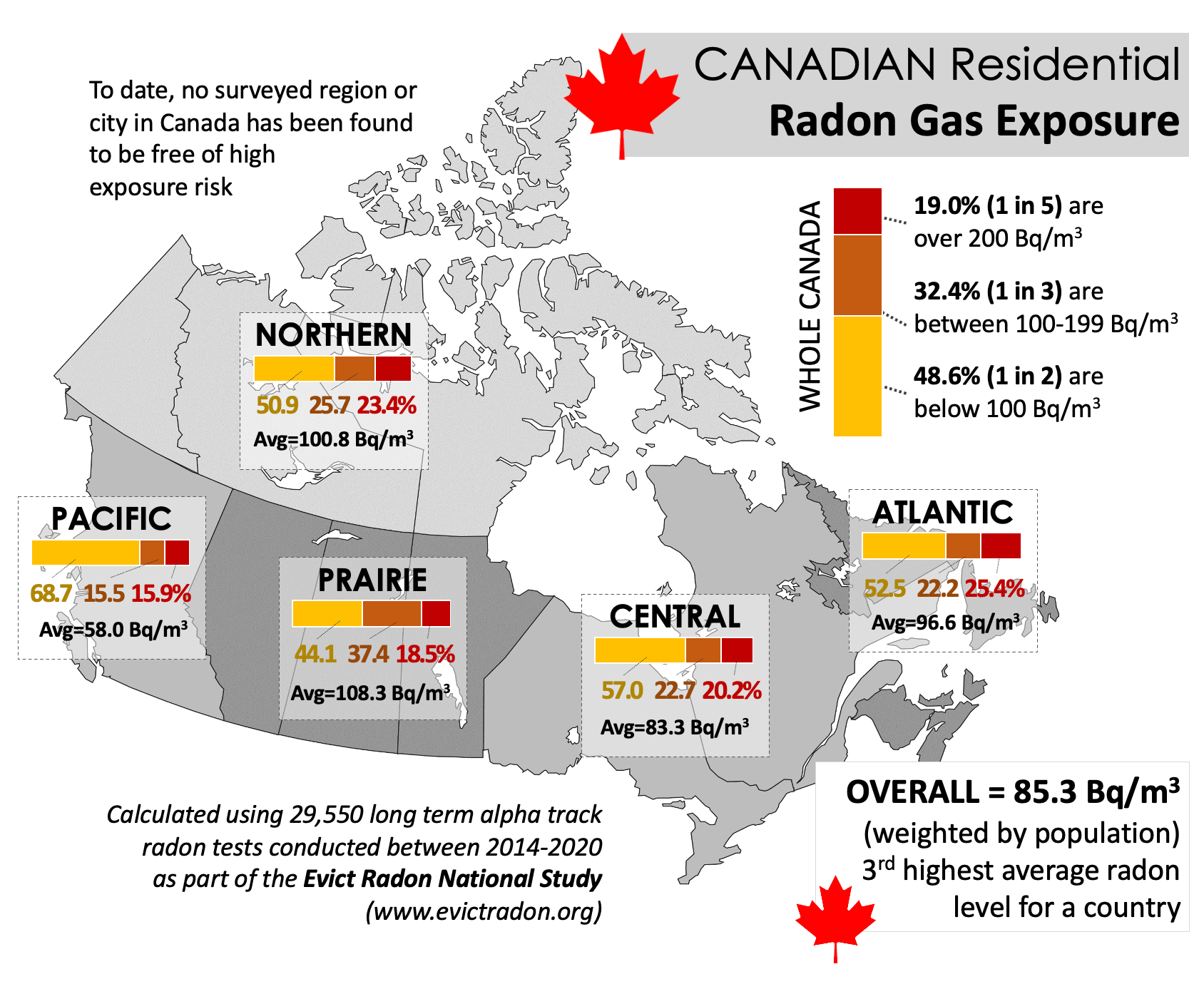Radon gas in Canada
Canada contains many radon-generating regions and, regrettably, our built environment (our homes, schools, workplaces, etc.) has been constructed in such a way that it has concentrated radon to unnaturally high levels within indoor air. The three factors or ingredients needed to incur hazardous radon exposure are:

How does Canada compare to the rest of the world?

Through the Evict Radon National Study, we have identified the people of Canada as having the third highest radon exposure in the world. This means that Canadians are having radon exposures known to increase their lifetime risk of lung cancer.
Why is Canada so high?
- Canada is a very large country with many areas of very high radon potential (meaning >300 Bq/kg of radioactive minerals in our ground)
- Canada also has strong seasonal fluctuations in weather and temperature –meaning our winters are often very cold, and our summers are very hot. Collectively, this environment causes Canadians to spend a great deal of time inside either artificially warmed or cooled indoor air environments. Such environments have the potential for highly concentrated radon levels.
- Without knowing it, Canadians have settled and built our villages, towns and cities on soils with very high radon potential, and we have designed and built houses that are very ‘good’ radon capture and contain devices. Thus, Canadians are among the more radon-exposed populations on Earth. It is important to recognize that this problem is preventable but, by and large, is no one’s “fault”.
There have been several recent studies on Canadian radon exposure including:
- The Cross Canada Radon Survey from Health Canada
- Canadian geologic radon potential mapping
- Publications comparing Canadian radon to countries all over the globe (Gaskin et al. 2018, Stanley et al. 2019, Khan et al. 2021, Brobbey et al. 2022, and Cholowsky & Chen et al. 2023).
Is all of Canada at risk?
Breaking down Canada into five regions, we have found that all regions of Canada contain properties that have high indoor radon. This means that the only way to know if your property is high in radon is to test your home.

